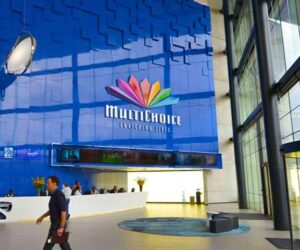OpenAI, the parent company of ChatGPT, is foraying into the hiring arena with “OpenAI Jobs Platform”, an AI-powered tool to connect businesses with AI-savvy talent. This move pits OpenAI against LinkedIn, the dominant professional networking and recruitment player. The platform promises to reshape how companies hire and how workers find opportunities in an AI-driven economy.
Announcing the new product in a blog post on Thursday, 4th September 2025, Fidji Simo, CEO of OpenAI’s Applications division, explains, “If you’re a business looking to hire an AI-savvy employee, or you just need help with a specific task, finding the right person can be hit-or-miss. The OpenAI Jobs Platform will have knowledgeable, experienced candidates at every level and opportunities for anyone looking to put their skills to use. And we’ll use AI to help find the perfect matches between what companies need and what workers can offer.”
The platform aims to bridge the gap between businesses and employees fluent in AI. It’s not just for tech giants. According to OpenAI, the platform includes a dedicated track for local businesses and governments. This feature helps smaller organisations compete for talent and modernise operations. The goal is to ensure AI expertise reaches every corner of the economy, from startups to city halls.
Simo further emphasised accessibility as the core of the product, saying, “We want to put AI, and the power that comes with it, in the hands of as many people as possible.”

The platform will help employers verify candidates’ AI skills, ensuring better matches. This focus on skill validation sets it apart from traditional job boards.
This is coming at such a crucial time as AI is transforming industries, creating new jobs while disrupting others.
OpenAI’s research shows over 500 million people globally use its tools, with 28% of U.S. workers using ChatGPT at work. This widespread adoption highlights the demand for AI-proficient employees. Yet, businesses struggle to find qualified candidates. The OpenAI Jobs Platform aims to fill this critical gap.
The timing is equally strategic. LinkedIn, owned by Microsoft, has long dominated professional networking. With over 1 billion users, it’s the go-to for recruiters and job seekers. However, the platform leverages its AI expertise to offer something different but necessary.
By focusing on AI fluency, it caters to a growing niche. It also aligns with its mission to democratise AI access.
How the OpenAI Jobs Platform works
The OpenAI Jobs Platform uses AI to streamline hiring, matching businesses with candidates based on skills, not just resumes. Employers can post jobs, specify AI-related requirements, and access a pool of pre-vetted talent.
For job seekers, the platform offers tools to showcase AI proficiency, such as certifications from the OpenAI Academy.


Its local focus is unique, small businesses and local governments often lack resources to compete for tech talent. Its dedicated track helps these entities find AI experts to modernise services. This inclusivity could disrupt LinkedIn’s one-size-fits-all model.
Competing with LinkedIn
LinkedIn has a massive head start. Its platform integrates networking, job postings, and learning resources. It also uses AI, but OpenAI’s expertise in generative AI could give it an edge.
The platform emphasises AI-specific skills, which LinkedIn’s broader approach doesn’t prioritise. This focus could attract companies racing to integrate AI.
OpenAI’s partnerships add weight. It’s working with Walmart, John Deere, Accenture, and Indeed to promote AI skills. These collaborations could drive adoption of the Jobs Platform.
LinkedIn, while partnered with Microsoft, may face pressure to innovate faster. The competition could spark a race to build smarter, more efficient hiring tools.


OpenAI’s move comes amid broader efforts to shape the AI economy. Its Economic Blueprint, released in 2025, calls for equitable AI access and infrastructure investment. The Jobs Platform is a key part of this vision. By connecting AI talent with businesses, OpenAI aims to boost productivity and economic growth.
The bigger picture
The OpenAI Jobs Platform is more than a LinkedIn rival. It’s part of a broader push to shape the AI economy.
OpenAI’s Academy, launched earlier this year, has reached 2 million users with free AI training. The Jobs Platform builds on this, helping trained individuals find work. Together, these initiatives aim to make AI a tool for opportunity, not disruption.
This aligns with OpenAI’s mission to benefit humanity. By focusing on local businesses and governments, it addresses economic inequality. Small towns and rural areas could gain access to AI talent, levelling the playing field. This vision contrasts with LinkedIn’s global, corporate focus.


The platform is still in its early stages, with plans for rollout in mid-2026. Details on its features are sparse. The company plans to expand partnerships and integrate more AI tools.
If OpenAI can deliver a seamless, AI-driven hiring experience, it could carve out a niche. But LinkedIn won’t sit still. Expect it to counter with new features or deeper AI integration.
The competition could benefit everyone. A race between OpenAI and LinkedIn may lead to better tools for job seekers and employers. It could also accelerate AI adoption across industries.







